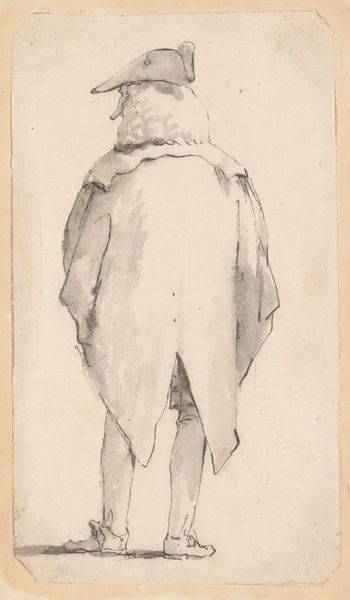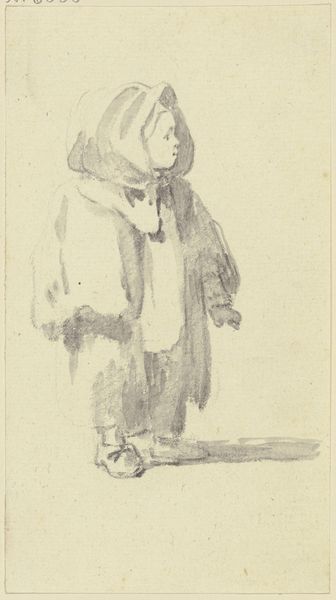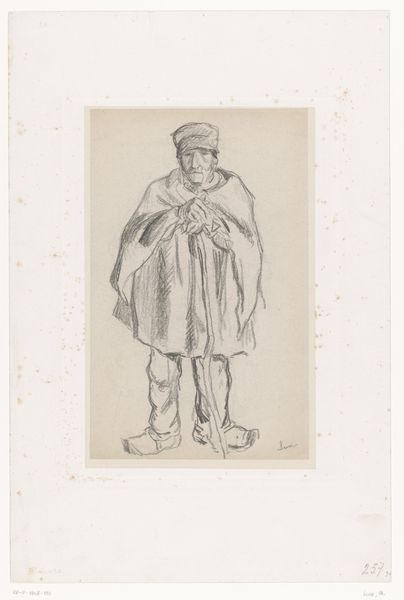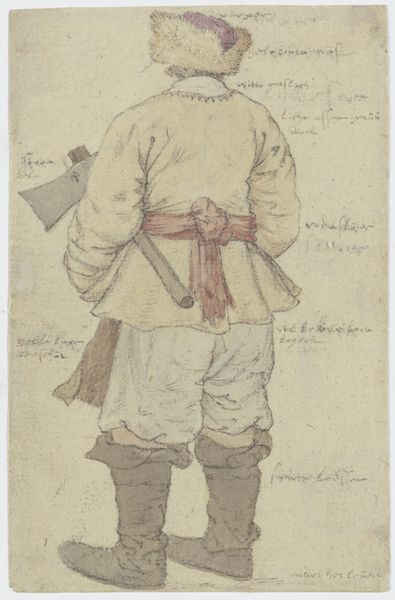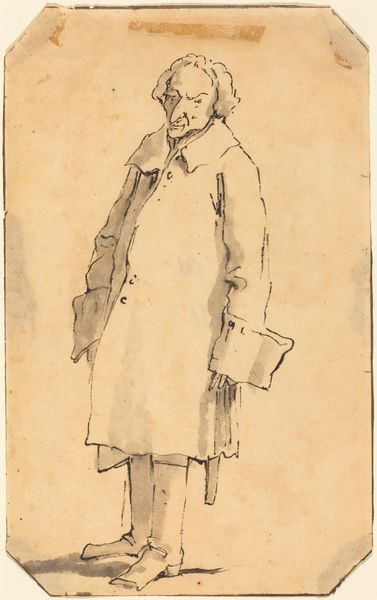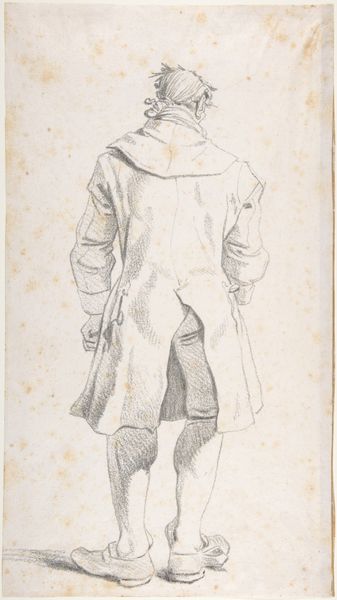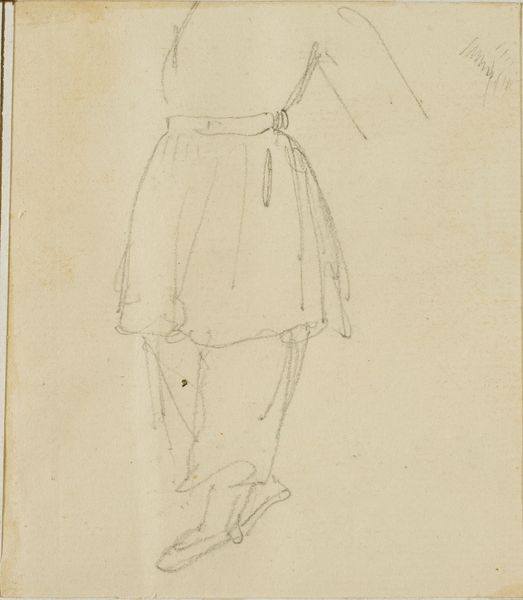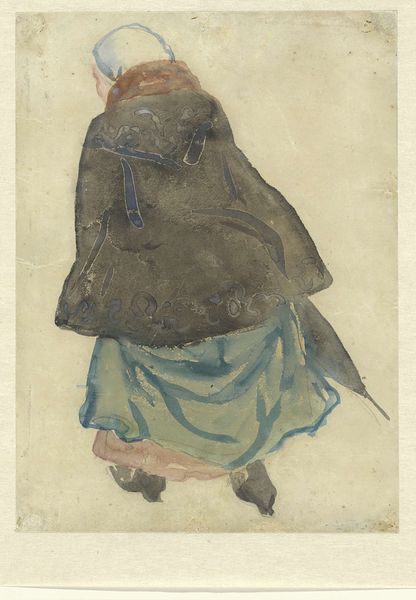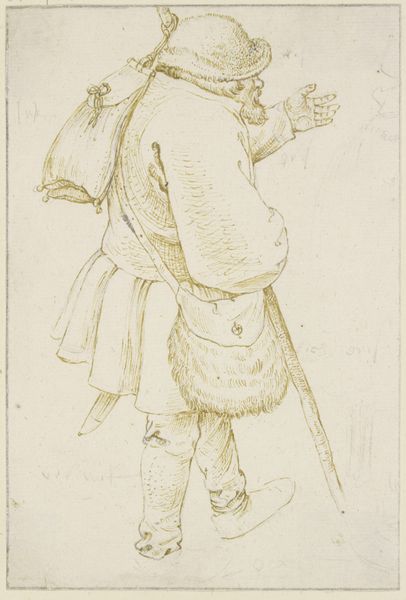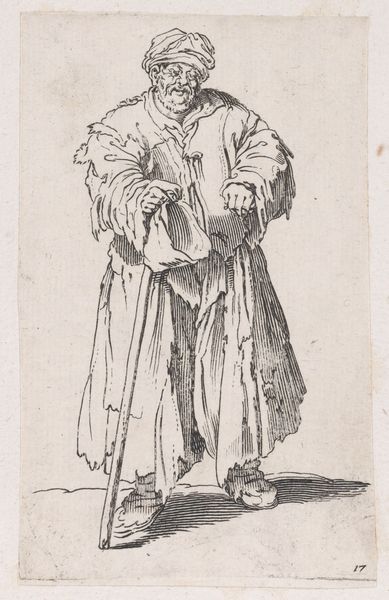
drawing, ink, chalk
#
drawing
#
baroque
#
landscape
#
figuration
#
11_renaissance
#
ink
#
chalk
#
14_17th-century
Copyright: Public Domain
Curator: Let's consider Roelant Savery’s “Man in a Ragged Cloak Walking to the Right,” created around 1608 or 1609, here at the Städel Museum. This drawing utilizes ink and chalk. What’s your initial response to it? Editor: There's an immediate melancholy in this depiction. The hunched posture, the tattered clothes—it speaks of hardship and resilience at the same time. There’s an entire story etched into those lines and I just feel profoundly sad looking at the man's condition. Curator: Indeed. Savery, despite being known for his idyllic landscapes and animal studies, captures a stark reality here. This drawing serves as a social commentary, reflecting the plight of the marginalized during the Renaissance. We mustn't forget the era's brutal socio-economic stratification, where poverty was rampant despite artistic and scientific advancements. Editor: Exactly! It's like Savery momentarily diverted from painting Eden to record a man lost in it. I feel his gaze; it’s devoid of hope. Do you think this character appears in any other work? I feel like if I search Savery's art, he must reappear in different poses. Curator: Savery created quite a few studies of figures from life during his travels, especially when in Prague serving Emperor Rudolf II. It’s entirely possible you could spot variations of the same character reappearing, worked into a more complete scene later. Such studies helped with staffage and other detailed elements in his bigger works. Editor: That’s it—he is not the subject but just staffage! Somehow, even a quick, almost cold chalk sketch still bursts with that human empathy that can make art so damn powerful. For all his Baroque sensibilities, there's a grounded reality here that cuts through any fluff or pretense. Curator: I agree. Though intended possibly for incorporation into a larger landscape or genre scene, the drawing also stands as a remarkable document of its time, challenging romanticized views of the era. Savery’s skill elevates a simple street scene to a poignant observation on humanity. Editor: It certainly invites us to reflect not only on Savery’s craftsmanship but on how societal inequalities resonate across centuries, which might be the point for creating all of those drawings of different people in society. That’s Savery's commentary about society in those years. Curator: Absolutely. The artwork allows for a critical examination of societal structures and the enduring challenges of poverty, issues still relevant today. It pushes past just pure aesthetic and becomes a reminder of our collective responsibility. Editor: So much is in that drawing: the fragility of being and the resilience that simmers even within the cracks. It's hard to unsee it, this drawing.
Comments
No comments
Be the first to comment and join the conversation on the ultimate creative platform.

